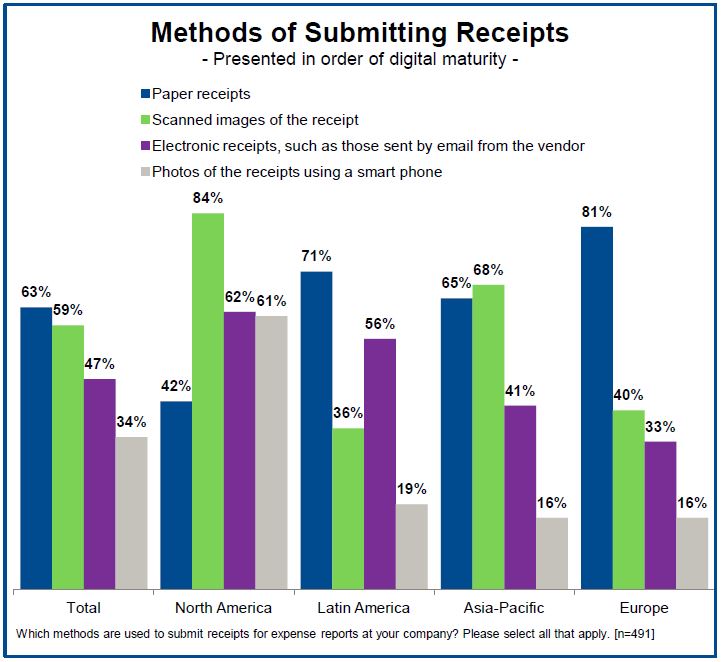Expense Reporting: State of the Industry
A recent GBTA Foundation study, in partnership with HRS, looked to better understand the expense reporting process at companies across the globe.
First, GBTA identified how expense reports are currently processed. Seven in ten travel buyers (70 percent) currently do so internally using third-party software. Two in ten (19 percent) process expense reports internally without the help of third-party software and another 4 percent outsource this process entirely. Breaking it down by region, using third-party software is most popular in North America (79 percent), Asia-Pacific (75 percent) and to a slightly-lesser extent, in Europe (66 percent). It is much less popular in Latin America where 55 percent of buyers use third-party software.
How are expenses reported?
Overall, 59 percent of travel buyers work for companies that require their business travelers to report their expenses in itemized lists by type. About one-quarter (27 percent) only need to report one total sum per transaction, meaning they would tally up room service and dry cleaning and code as one expense under hotel ancillary costs. Only one in ten must (10 percent) report itemized expenses by individual item. Reporting expenses as itemized costs by type is most popular in North America (72 percent), while providing one total sum per transaction is more popular in Asia-Pacific (39 percent) and Europe (36 percent), particularly in the Nordic countries (52 percent) compared to travel buyers worldwide.
How are expense reports submitted?
Travel buyers in North America (86 percent) and Asia-Pacific (84 percent) most often use an expense reporting software, while Latin American travel buyers report using such software at a much lower rate (60 percent). Instead, Latin American travel buyers are much more likely to use another computer program to submit their expense reports. On the flip side, travel buyers in Europe (35 percent) are most likely to submit paper expense reports meaning there is an opportunity there to increase efficiencies by adopting new technology.
How can receipts be submitted?
As you can see, expense reports have mostly moved into the digital age. The same is not true when it comes to submitting receipts. Submitting paper receipts remains the most popular method particularly in Europe (81 percent) and Latin America (71 percent). North America is the exception where majorities of travel buyers report submitting receipts via scanned images (84 percent), electronically (62 percent) and using their smart phone (61 percent). While four out of five (79 percent) of travel buyers who can’t currently submit receipts via scanned or photo images feel that allowing this would improve the experience, some countries require a paper trail so it may not be an option at their company until the federal government updates its requirements.
This gives you the lay of the land when it comes to how expense reports are done across the globe. Stay tuned for my next post that explores pain points in the expense reporting process.



